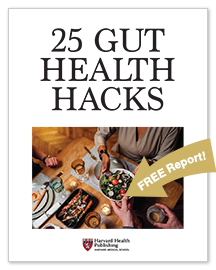
5 timeless habits for better health
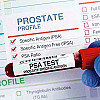
What are the symptoms of prostate cancer?

Is your breakfast cereal healthy?

When pain signals an emergency: Symptoms you should never ignore

Does exercise give you energy?
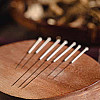
Acupuncture for pain relief: How it works and what to expect

How to avoid jet lag: Tips for staying alert when you travel
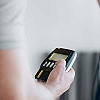
Biofeedback therapy: How it works and how it can help relieve pain
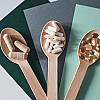
Best vitamins and minerals for energy

Should you take probiotics with antibiotics?
Medical Devices & Technology Archive
Articles
How do I measure exercise intensity?
On call
Q. Exercise guidelines recommend a certain number of hours per week, depending on whether it's moderate or vigorous intensity. So how do I measure exercise intensity?
A. Outside of a physiology laboratory, there really is no standard agreement on how people should gauge their level of exercise intensity.
Is your home blood pressure monitor accurate?
Research we're watching
Most home blood pressure monitors sold in Australia are not carefully tested for accuracy, according to a study published online April 10, 2020, by the journal Hypertension.
Because more than 90% of the devices the researchers studied were purchased from international online platforms such as Amazon and eBay, that means many devices purchased in the United States and elsewhere might give inaccurate readings, the authors say.
High-tech calls for help: Understanding gadget limits
Learn about a device's pros and cons so you're not stranded.
John was in trouble: The 84-year-old wound up on the floor after sliding out of a chair. While unhurt, John couldn't get up. He lived alone and couldn't reach his cellphone, house phone, or alert button; all were on a table next to his chair. After three long hours trying to inch across the floor, John remembered that his "smart" speaker (activated by voice commands) was connected to his smartphone. John called out for the speaker to dial his daughter, who sent help right away.
Electronic gadgets like smart speakers can be a great addition to the home. But a smart speaker won't save the day in every emergency. Before investing in a gadget for security, learn about its potential limitations.
How accurate are wearable heart rate monitors?
Research we're watching
Smart watches and wrist-worn fitness trackers that estimate your heart rate appear to be reliable in people with a range of different skin tones. But their accuracy may vary during different types of everyday activities, a new study finds.
Researchers recruited 53 people with different skin tones to test six different devices, which work by measuring changes in blood flow through the skin using a special sensor. The volunteers also wore electrocardiogram patches (which provide a gold-standard heart rate measurement) while they did different activities: sitting still, breathing deeply, walking, and typing.
Take monitors to heart
Here's what a heart rate monitor might do for you.
All kinds of high-tech exercise gadgets are available nowadays, from activity trackers to Apple Watches. However, one of the oldest technologies is still quite valuable: the simple heart rate monitor.
"For some people, a heart rate monitor is the ideal fitness tool to help them stay in tune with their body, so they can exercise better, smarter, and safer," says Dr. Meagan Wasfy, a cardiologist with Harvard-affiliated Massachusetts General Hospital.
Bargain or beware? Tips to buy gently used medical equipment
Do a thorough assessment to make sure equipment is safe.
Your doctor or an occupational therapist may recommend that you use some kind of medical equipment, such as a walker, electric scooter, cane, lift chair, or shower chair. Such equipment can help you maintain your independence or continue living at home. But what if your insurance won't pay for an item or if you need a spare? For many people, the solution is gently used equipment.
Bargain hunting
You'll find used medical equipment in consignment shops and thrift stores, and through online classified ad sites (such as Craigslist). The deals are substantial: you may find a used electric wheelchair (that retails for $2,500 new) for a few hundred dollars, or a used power lift chair ($500 new) for just $75.
Harnessing CRISPR to stop viruses
News briefs
A research team from Harvard reports that it has harnessed the powerful gene editing tool called CRISPR to recognize and kill viruses. The findings were published online Oct. 2, 2019, by Molecular Cell. CRISPR can alter strands of both DNA and RNA (a molecule related to DNA), which are built like strings of beads. Each bead consists of one of four chemicals called bases. CRISPR can recognize a specific sequence of bases (such as one that is characteristic of a particular virus), latch on to that sequence and cut it, and change the sequence to a different one. This can scramble the genetic sequence of a virus in such a way that the virus no longer can make copies of itself. The Harvard team used this technique to kill several viruses that are made of RNA — including influenza virus — in a laboratory dish. The next step will be to see if the CRISPR technique can also be used to kill viruses in a living animal. That will be much harder. However, if it works, the technique might someday help humans fight viral infections.
Image: © Bill Oxford/Getty Images
One hearing aid or two?
If you’re like most people with hearing loss, you’ll probably find that it takes time to accept the idea that you need a hearing aid, and you may be unhappy when your audiologist recommends that you get not one, but two. Chances are that your first question will be, “Is it normal to get two hearing aids?” And then, “Do I really need two?”
If you have hearing loss in only one ear and normal or nearly normal hearing in the other, then one hearing aid is all you need. But most people have hearing loss in both ears, especially if the loss is age-related. (You may have one ear that’s better than the other, but chances are both will be in the same ballpark.) In that case, research and experience suggest that you’ll ultimately be more satisfied with two hearing aids.
Women less likely than men to receive potentially lifesaving heart device
Research we're watching
Women experiencing heart failure are less likely than men with the same condition to receive a mechanical heart pump designed to help blood circulate through the body, says a study published in the September issue of the journal Circulation: Heart Failure. The pump, called a left ventricular assist device, or LVAD, is typically used in people who have advanced heart failure. Looking at data from nearly 30,000 hospitalizations in which people received an LVAD device, the researchers found that women made up only 21.9% of those recipients. That number represented a decline from 2004, when 25.8% of LVAD recipients were women. The study's author said the difference might reflect a reliance on outdated statistics that showed women were more likely to die after receiving LVAD devices. This is no longer the case with new versions of the device.
Image: JFsPic/Getty Images
When the heart beats too slowly
Known as bradycardia, this heart rhythm disorder can cause fatigue, dizziness, and fainting.
The steady beat of your heart depends on a crescent-shaped cluster of cells in the upper right portion of your heart. Called the sinoatrial or sinus node, it emits a tiny jolt of electrical current that triggers the heart to contract and pump blood throughout the body (see illustration). Because the sinus node determines the heart's pace and rhythm, it is sometimes called the body's natural pacemaker.
Just as your skin, joints, and other parts of your body reveal signs of normal wear and tear as you age, so too can the structures inside your heart. "This age-related degeneration can affect the sinoatrial node and other parts of the heart's conduction system," says Dr. Peter Zimetbaum, director of clinical cardiology at Harvard-affiliated Beth Israel Deaconess Medical Center.

5 timeless habits for better health

What are the symptoms of prostate cancer?

Is your breakfast cereal healthy?

When pain signals an emergency: Symptoms you should never ignore

Does exercise give you energy?

Acupuncture for pain relief: How it works and what to expect

How to avoid jet lag: Tips for staying alert when you travel

Biofeedback therapy: How it works and how it can help relieve pain

Best vitamins and minerals for energy

Should you take probiotics with antibiotics?
Free Healthbeat Signup
Get the latest in health news delivered to your inbox!
Sign Up










